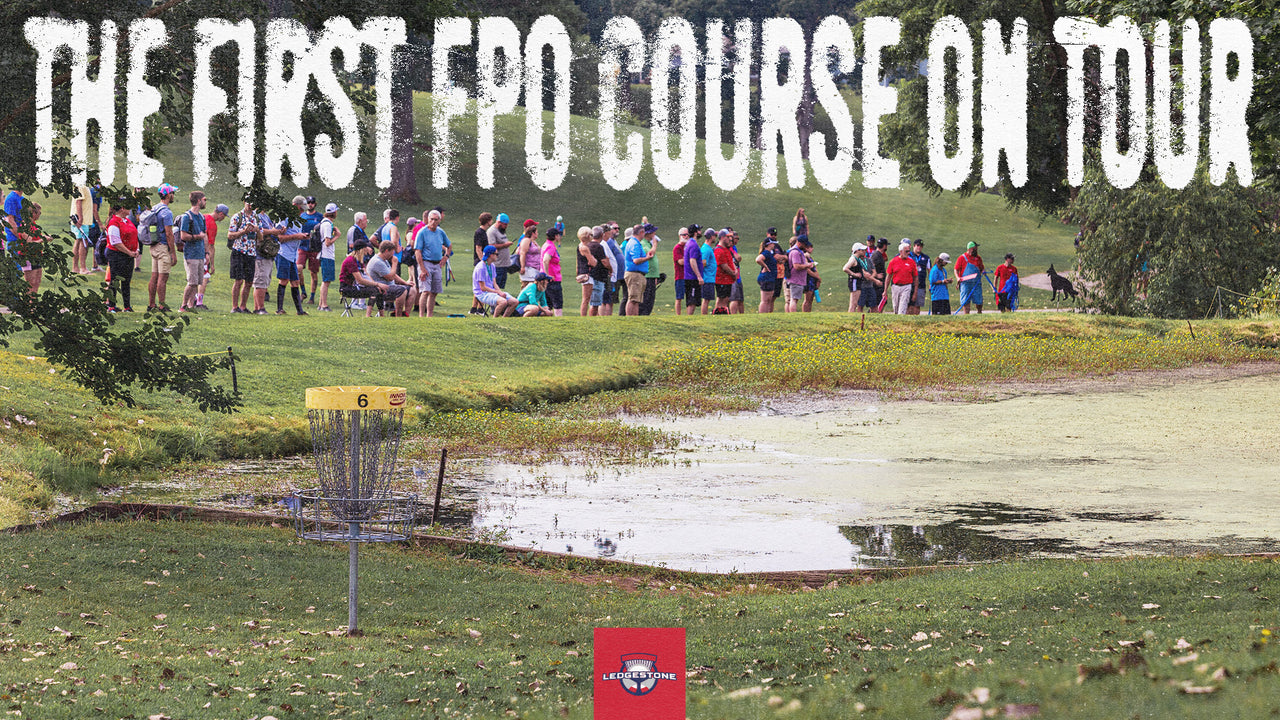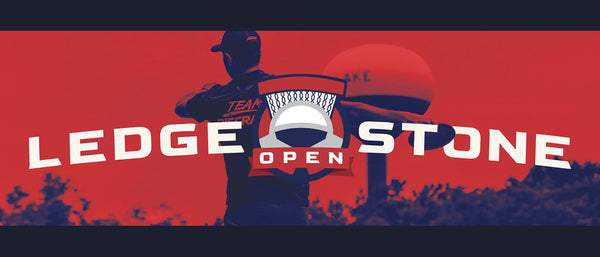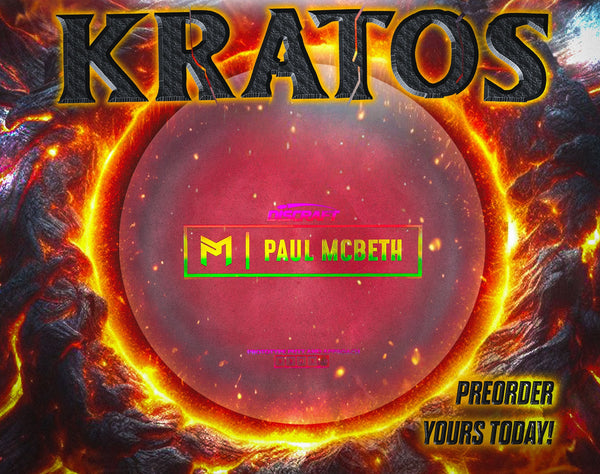The solution to tailoring tour stops to the FPO field has historically meant adding shorter tee pads to an existing course.
Generally, the MPO course location is chosen for difficulty or historical value. Then, because the two tours follow the same route, the FPO field is tossed onto the same course with a higher par.
But the Disc Golf Pro Tour’s annual stop in Peoria, Illinois has a different idea.
“Nate (Heinold) has the men covered with Eureka and Northwood, so we wanted Sunset Hills to be a place specifically for the ladies to show off their skills,” said Sunset Hills designer Seth Friedrich. “We wanted a course that would test their specific skill sets and abilities, so we tailored it to those players.”
Since 2017, Sunset Hills has been the FPO feature course for the Ledgestone Open and was also showcased during the PDGA World Championships in 2019. Ledgestone was the first stop on tour to boast a separate course designed exclusively for the FPO division.
Friedrich frequented the Pekin property long before he installed its first disc golf course.
The Sunset Hills Golf Club first opened in 1960. This exclusive establishment featured an executive nine, private swimming pool, and members clubhouse.
Friedrich remembers hanging around the place as a young kid.
“I can go back as far as my 5th grade year when it was a country club and that entire back deck was a pool,” he said.
In the early 2000s, the swimming pool was filled in, the executive nine was closed, and the property was opened to the community. About a decade later, the golf course was put up for sale and the property was purchased by two local owners who Friedrich had known his entire life.
“My in was that I’m friends with the previous owners’ stepson,” he said.
The new ownership did extensive redesign work on the 18-hole golf course and the clubhouse, trying to increase the value and bring in more money. The approach did not work as well as they’d hoped and they found themselves in need of additional income to stay afloat financially.
That’s when their friend Freidrich (now an experienced disc golfer living just a few blocks away) pitched the idea of disc golf. But even with low costs in comparison to the alternative idea of a brand-new putting green, the ownership wasn’t willing to give the go-ahead for Friedrich’s course.
“They were looking for some new revenue streams,” Friedrich said. “I pitched this idea to them and they were pretty hesitant. They wanted to make money, but didn’t want to spend money.”
It wasn’t until Friedrich offered to pay for it himself that they finally agreed.
He was given permission to build a 9-hole course using the land of the former executive nine from the days of the old private club. It had been more than a decade since the land had been touched and the vegetation looked dramatically different.
“We used that as a kind of test run,” he said. “They had shut down the executive nine when I was in high school and let it grow into thick woods for 10-15 years. When I moved back after college, what used to be a 9-hole golf course was just a big thing of woods. I remembered what it used to be and thought I could get it to look like that again.”
In late August of 2014, Friedrich finished the 9-hole layout and Sunset Hills opened it to the public as a pay-to-play course. Just three months later they had generated more money than it had cost for Friedrich to install the course in the first place. They quickly gave the go-ahead for a full 18-hole layout.
Friedrich then went to work, bringing in fellow professional, Greg Freeman, to assist in the project. The two carefully laid out a course that followed the traditional ball golf design and would be at a difficulty level to test advanced players.
“At that same time, Nate Heinold mentioned partnering up for the Ledgestone Open and he hinted at putting in a bid for Pro Worlds,” Friedrich said. “I was very familiar with the other courses in the area. It was obvious, at the time, that if we wanted to get serious about a Worlds bid, we were going to need another course that was championship-level, but was also different.”
In 2015, the first 18-hole iteration opened to the public with the first 11 holes following the current ball golf course and the final seven playing through the old executive nine. With this design, players can sign up for tee times just like the ball golfers and share the course at the same time since it follows the same route.
“There are some very aesthetically-pleasing holes out there by design,” Friedrich said. “But our number one goal for putting the course in, and my favorite part of the course, is that on any given hole you can gain some strokes on the field or you can lose some strokes on the field. It’s up to you when you’re going to go for something or when you’re maybe going to back off and play a little more conservative.”
In its eight years of existence, Sunset has undergone a few tweaks. Most notably, the easiest hole on the course was removed completely after a few years. This allowed the extension of the player-favorite hole 15 along with room for an additional par 4 out on the ball golf course portion of the layout.
In 2023, there are a few more notable alterations. The hole 12 tee box has been moved to create a better hole, new signage has been added to improve course navigation for less-familiar players, and the hole 9 basket, which previously sat atop a tree stump, will now sit on a permanent stand in the exact same spot because of rotting within the stump.




